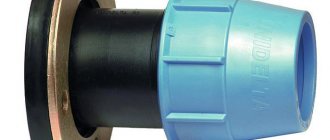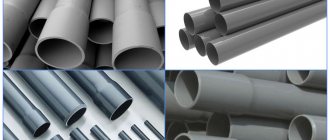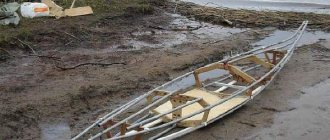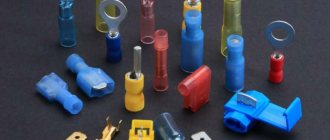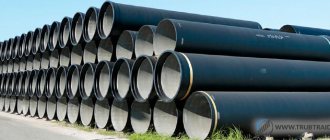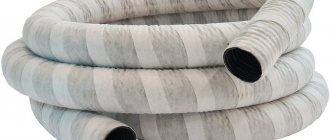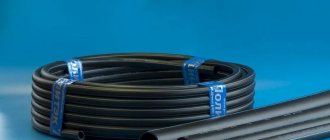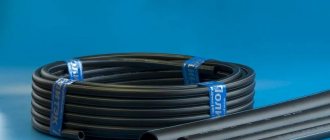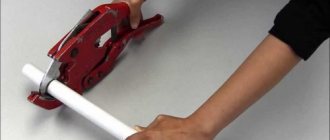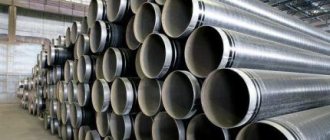Most pipelines for various purposes are installed by welding, which ensures reliability and long service life of the joints. But when, due to installation conditions, this method is unacceptable or periodic disassembly is required during operation, a flange connection is used. In terms of reliability and durability, it is not inferior to the welded version, and is easier to install.
Production of flanges from various blanks
The technological capabilities of our enterprise allow us to produce flanges and other rotating parts with DN from 200 to 3000 mm (flanges DN, Dn up to 3000) weighing up to 7 tons.
Casting flanges
Our centrifugal electroslag casting plant provides high quality cast metal through electroslag smelting refining. Fur. At the same time, the properties of the blanks are not inferior to forged ones in terms of strength, but are superior to them in terms of impact strength and ductility.
Forged flange
Steel blanks for flanges can be produced by hot stamping technology
An important advantage of this production method is the low price of flanges and the short production time of flanges.
Manufacturing of flanges from forgings
We produce collar flanges, flanges of vessels and apparatus, flanges of large nominal diameters from forgings. Flanges from forgings are manufactured upon prior request.
Flange quality control
We carry out the following points to control the properties of flanges:
- macro- and microstructure;
- geometric control;
- incoming and outgoing control of chemical composition;
- mechanical indicators of steel (properties).
Methodology for performing the transition
In any engineering systems, both domestic and industrial, sooner or later the use of technologies for joining different types of pipes is required. They differ in the labor intensity of the process, the availability of professional skills, and the availability of special tools. Despite the significant differences in the physical and chemical properties of steel and polypropylene, there are several options for connecting pipes made of iron and plastic materials.
Threaded transition from iron to polypropylene
The method is used when it comes to manipulating pipes with a diameter of no more than 40 mm. The key element when making a connection are fittings. On one side, the pipe adapter has a thread for a metal end, on the other, a regular hollow hole for soldering with polypropylene. Naturally, the fittings differ:
- by diameter (15, 20, 25 mm, etc.);
- by thread position (internal or external);
- by the number of bends (tee, cross);
- by angle of withdrawal (450.900).
The variety of fittings for threaded connection of a metal pipe with a polypropylene pipe is so great that it can be used in pipeline diagrams of any complexity with any number of turns, branches, etc.
To carry out docking, in addition to adapters, the following are used:
- tools: pipe cutter, polypropylene scissors, plumbing soldering iron, die or tap;
- lubricant for pipe aphids, sealing materials: sealant paste, fum tape, tow.
Scheme of work:
- The end of the steel pipe is lubricated and the thread is made: external with a die, internal with a tap.
- The adapter is screwed onto the thread, which is pre-lubricated with a sealing compound. For tightness, fum tape and sanitary linen are also used.
- Using a plumber's curling iron, the polypropylene pipe is soldered to the fitting.
- At the end of the section, operations similar to the first three are carried out.
- The strength of the joints is checked empirically. If, when opening the tap, there are leaks at the connections, the work will need to be redone.
Flange connection of dissimilar pipes
The advantages of this technology are strength, reliability, the ability to re-install and dismantle as many times as desired, as well as application in a different temperature range.
Polypropylene and steel pipes have differences in determining diameters. The flange connector allows the connection to compensate for the difference in size as much as possible.
Docking procedure:
- The iron pipe is cut in the right place. The docking line should be drawn delicately;
- A flange is installed on the pipe.
- A coupling with a flange is also put on the polypropylene pipe.
- The flanges are secured to each other using bolts. The joint is sealed using a silicone or rubber gasket. The bolts must be tightened gradually and evenly. The operation involves a torque wrench.
- To make the structure more tight, you can repeat tightening the bolts after an hour or two.
- Finally, consolidation reliability tests are carried out.
A flange transition from metal to polypropylene is sometimes the only possible technological option when joining pipes with a large cross-section.
Transition without threads and welding
Work on joining dissimilar pipes can be performed without soldering and cutting operations. The functional element in this version will be a special coupling. The structure of such a connector contains:
- body (ideally made of cast iron or steel);
- nuts securing the body on both sides;
- washers located inside the coupling;
- gaskets in the housing to seal the connection.
Execution of work:
- Insert the metal pipe through the nut into the coupling until it reaches the middle. The pipe must pass through washers and gaskets
- From the reverse side, insert the polypropylene pipe into the adapter in the same way
- Tighten the nuts tightly.
- Sealing occurs by squeezing the gaskets on both sides. The test is carried out in a simple way - by starting a stream of water.
This type of connection between steel and polypropylene is classified as compression. Its advantages:
- reliability and strength of the joint;
- independence from special equipment;
- speed and ease of installation;
- long service life.
What types of flanges are there?
Types of flange connections for pipelines are listed in special regulatory documentation.
For joining steel pipes, the following types of flanges are used, depending on the material of manufacture:
Installation of flange connections of welded type pipelines is carried out by welding them to the pipe end using two welds. Butt welding elements have one seam separating the pipe and the flanged body. The design, equipped with a ring, includes two parts - a plate and a ring, with the same diameter. In this case, the pipe has one ring, and the flange rotates completely freely around the pipe.
Types of flange connections of pipelines and equipment (or vessels) have the following classification:
- Flat made of steel (GOST No. 28759-2). They are used on equipment with a cross-section of 40-400 cm. They can withstand pressure of 0.3-1.7 MPa and temperatures of -70 +300 degrees.
- Steel, for butt welding (GOST No. 28759-3). Available in diameters of 4-400 cm. Designed for pressure 0.7-6.5 MPa, temperature -70 - +550 degrees.
- Steel, having an octagonal cross-section. They can have a diameter of 40-160 cm. Acceptable pressure parameters: 6.4-16 MPa, temperatures: -70 - +550 degrees.
We cannot ignore the so-called insulating flange connection
Its immediate task is to protect the pipe from corrosive processes of the electrochemical type: it is because of this that underground communications quickly fail. The insulating flange connection includes two tie rods and a dielectric gasket made of heat-stabilized graphite or paronite.
With the help of such a connection, stray electric currents are localized in specific main sections: often special grounding is used to drain them into the soil. The use of insulating flange connections leads to a noticeable increase in the service life of communications located underground. The dielectric gasket is changed approximately once every 15-20 years: this will require the presence of special accelerators in the form of wedge-shaped jacks for routing adjacent flanges. These devices can be manual or hydraulic, with the ability to develop forces of up to 15 tons.
What is a flange and how it works
The concept of flange includes not only a part of plumbing fittings, but also a method of fastening pipes, which is used in practice in all industrial sectors. Flange connections of steel pipes are tight and durable.
In this case, the connection is removable. This means that after removal, you can carry out all the necessary repair work and reuse the highway section. Flange connections for steel pipes are selected based on the purpose of the network, and various types of flanges that are made from different materials are used.
With a wide variety of steel options, the following main types of structures are distinguished:
- Walk-through options. They are successfully used to increase the length of the pipeline.
- Blanking flanges. This is a dead-end version of these parts.
It turns out that flanges are connection parts that are installed in networks with a long service life, and in pipelines with high pressure inside, but monolithic connections by welding are called higher priority.
The movement of the medium through the pipeline is suspended before the start of installation work, and is turned on only after the activities have completely stopped. Particular attention is paid to pressure; it is recommended to increase the load on this part gradually.
Design features of flanges
In Russia, 3 types of pipeline connecting flanges are used, which differ in design. The parameters are established by GOSTs. The type classification of steel flanges used is included in several standards:
- GOST 12820-80 is used for flat welded parts. The element is “put on” the pipe, followed by fastening by welding. The connection is made with two seams at the junction. Installation is labor-intensive, but provides a particularly reliable connection.
- GOST 12821-80 is used to standardize butt welded parts (another name is collar flange). When installing the connection, the end of the pipe and the collar of the main part are joined. To ensure a strong position of the parts, welding is carried out with a single seam.
- GOST 12822-80 is used for free parts on the ring. The package includes an additional element - a ring with a diameter equal to the flange. The design is easy to install, effectively used in hard-to-reach places. This type of connection is used when frequent repairs are necessary. The peculiarity of the installation is the welding of the ring with a free placement of the flange, which can be easily rotated on the pipe.
Less often used is the GOST standardization adopted for threaded flanges, insulating types for underwater pipelines, and others. These forms of pipe connections have a special purpose and are rare.
The GOST requirements define the features and parameters for each type of flange:
Conditional pass.
It is measured in millimeters and indicates the difference in diameters of the connecting part and the pipe. The parameters are not the same and are relevant for steel flat flanges and elements with a welded ring. For collar types of connection parts, the parameter has no meaning. For a nominal diameter, the symbol DU is used using the indices A and B, where the letter A means the diameter of the part, and B means the pipes, expressed in millimeters.
Row of holes.
The parameter sets the differences in size between the connecting holes. In some cases, different diameter parameters, expressed in millimeters, are used for holes. When manufacturing parts, the standard option used by default in row 2 is used.
Conditional pressure.
The indicator expresses the maximum permissible pressure that a connection can withstand without leaks or destruction. The parameter is influenced by the type of part, material of manufacture, diameter, width of the joining surface. Physical parameters and their influence on the maximum pressure indicator are established by GOST. When using the data, differences in the dimension of the pressure designation are taken into account.
Working temperature.
The parameter is necessary to determine the pressure limit value. The physical interdependence of the pressure and temperature of the transported liquid must be taken into account when high-temperature media pass through pipes. The linear interpolation that occurs by calculation affects the connecting capabilities of the flanges, which decrease as operating temperatures increase. GOST standards establish the relationship between temperature and pressure for each type of flange.
Flange pressure classes
Parts manufactured according to Asme (Asni) standards are always characterized by a number of parameters. One of these parameters is the nominal pressure. In this case, the diameter of the product must correspond to its pressure according to established standards. The nominal diameter is indicated by a combination of the letters “DU” or “DN”, followed by a number characterizing the diameter itself. Conditional pressure is measured in “RU” or “PN”.
Flange drawing with various symbols
Pressure classes of the American system correspond to conversion to MPa:
- 150 psi - 1.03 MPa;
- 300 psi - 2.07 MPa;
- 400 psi - 2.76 MPa;
- 600 psi - 4.14 MPa;
- 900 psi - 6.21 MPa;
- 1500 psi - 10.34 MPa;
- 2000 psi - 13.79 MPa;
- 3000 psi - 20.68 MPa.
Translated from MPa, each class will indicate the flange pressure in kgf/cm². The pressure class determines where the selected part will be used.
Production technology
Several methods are used to produce flanges:
- Centrifugal casting
- Stamping or forging
- Cutting from rolled steel sheet using a laser tool.
- Hot forging from blanks in the form of rolling rings.
- Semi-manual method using CNC machines or semi-automatic turning and milling.
The most productive method, often used to produce a serial batch, is stamping, carried out in closed forms - stamps. The least expensive method is to cut parts from sheet steel. The method requires additional ultrasonic testing for the absence of cavities.
During the manufacturing process of parts, regular quality control is carried out. The performance of the lines depends on the quality of the flange; in the event of a failure or accident, the user will incur significant losses. One of the main tests is to check for mechanical integrity and surface evenness.
Currently, a large number of imported equipment adapted to international standards are being purchased. The enterprises have launched the production of “transitional type” flanges, combining the parameters of different standardization systems.
To protect flange connections from exposure to aggressive environments, the flanges are coated with special materials that increase their service life. The surface layer of steel is treated with nickel, chromium, zinc and other materials that prevent premature destruction. The type of coating is determined by the customer.
How to make a threaded connection with your own hands
The first thing that is required is to prepare the tools: a tap, a die, several clamps, a wrench.
- Pipes are being prepared
- A groove is made
- Basic pass
- A tap creates an internal thread on one pipe
- The die makes an external thread on the second element
- Using seals and fittings, a connection is made.
Seals and sealants
- Linen is a natural material, produced in the form of threads. Seals the connection well
- Fum tape. Modern synthetic material. Very easy to use.
- Anaerobic sealant. Maximum tight connection. Stops thread loosening. Dismantling often requires heating the joint.
Fitting
- Standard fitting. Used to increase the strength of connections of simple elements that require easy access.
- Compression fitting. A union nut is used for installation. If you tighten it with a seal, you will get a high-quality tight connection. This type of fitting includes the American one.
Varieties of American - permanent connection
The use of two technologies: threaded connection and welding. It will not be possible to dismantle the pipes with a regular wrench, but the quality of sealing is excellent.
The threaded connection is used not only for steel pipes; now plastic pipelines are also installed in this way.
https://youtube.com/watch?v=0-4T3d2zmHY
Insulating flange connections on a gas pipeline
Central warehouse store and assembly area
village Kryazh, st. Sputnik/st. Kurganskaya, 330-37-01, 246-53-78
Stroykomplekt LLC is a certified manufacturer of IFS (insulating gas pipeline connection, insulating flange connection). Certificate of Conformity No. С-RU.АE56.В.00987 TP 0681219 issued by the certification body. Valid from 06/06/2011 to 06/05/2016. .
A special order is possible for the production of components and IFS (insulating flange connection, insulating connection of gas pipelines) with DN up to 300.
IFS (insulating flange connection), insulating connection of gas pipelines) is a strong-tight connection of two sections of the pipeline, which, through an electrically insulating gasket and bushings, prevents the passage of electric current along the pipeline. IFS (insulating flange connection, insulating connection of gas pipelines) consists of three flanges. A PON-B paronite gasket was used as an insulating seal between them. The connection of the flanges is ensured by studs, which are isolated from the flange by fluoroplastic bushings. To connect electrical measuring instruments, three screws are provided in the IFS design (insulating flange connection, insulating gas pipeline connection).
Technical characteristics:
Conditional pressure of the medium (Pu) 10, 16, 25 kgf/cm2 Temperature of the medium: from -30 to 250 °C Resistance at voltage 1 kV, not less than 5 MOhm
Complies with GOST 12816-80 Certificate No. ROSS RU.АУ96.В03259 dated 04/12/05 License No. АУ96.В00415 dated 05/07/01
Fig.1 Insulating flange connection
Technical description:
IFS (insulating gas pipeline connection, insulating flange connection) is a strong-tight connection of two sections of a pipeline, which, through an electrically insulating gasket and bushings, prevents the passage of electric current along the pipeline. The design of the IFS (insulating gas pipeline connection, insulating flange connection) is shown in Fig. 1. IFS (insulating gas pipeline connection, insulating flange connection) consists of three flanges (items 1 and 3). A paronite gasket PON-B (item 5) is used as a seal between them. The connection of the flanges (items 1 and 3) is ensured by a pin (item 4), which is isolated from the flange (item 1) by a fluoroplastic bushing (item 2). To connect electrical measuring instruments, the IFS design (insulating gas pipeline connection, insulating flange connection) is provided with three screws (item 6).
Types of threaded connections between pipes
Similar to threadless methods, threaded pipe connections can also be detachable or permanent. Although it would seem that any threaded structure can, in principle, be disassembled, there are situations when two pipes connected by a thread are additionally welded to fixed surfaces, which prevents their separation. In this case, they speak of a permanent threaded connection.
However, the above situation is rather an exception; in general, threaded methods are considered as detachable types of pipe connections. There are several varieties, but two have the greatest practical application: bending and bidirectional threading.
Connection by means of a bend is used in cases where the pipes are stationary relative to their own axis, and one of them has a long threaded section, and the other a short one. A locknut and coupling are screwed onto a pipe with a long piece of thread. Next, the coupling is driven from the long thread to the short one until the very end, being pressed on the other side with a lock nut.
Constructive.
The basis of this group of characteristics is the flange design. In the Russian Federation and CIS countries, three flange standards are most widespread:
- GOST 12820-80 - steel flat welded flange.
- GOST 12821-80 - steel butt welding flange.
- GOST 12822-80 - loose steel flange on a welded ring.
Flanges according to the three most common standards mentioned above are designed to connect pipeline fittings and equipment. Due to their design features, the installation conditions for these flanges vary.
- Flat welded steel flange. During installation, the flange is “slipped” onto the pipe and welded with two welds around the circumference of the pipe.
- Butt welded steel flange. Installation of such a flange, compared to a flat welded flange, requires only one connecting weld (in this case, it is necessary to butt the end of the pipe and the “collar” of the flange), which simplifies the work and reduces time costs.
- Steel loose flange on weld ring
In addition, it is positive that when selecting free flanges for a stainless steel pipe, for the sake of economy, it is allowed to use a stainless steel ring and a carbon flange (Table 1).consists of two parts - a flange and a ring. In this case, naturally, the flange and ring must be of the same nominal diameter and pressure. Such flanges differ from the above in ease of installation, since only the ring is welded to the pipe, and the flange itself remains free, which ensures easy joining of the bolt holes of the free flange with the bolt holes of the flange of the fittings or equipment without turning the pipe. They are often used when installing pipeline fittings and equipment in hard-to-reach places or when frequently repairing (checking) flange connections (for example, in the chemical industry).
| Flange type | Environment Settings | Material grade | |
| Conditional pressure Ru, kg/cm2 | Temperature K (°C) | Flange | |
| Steel flat welded GOST 12820-80 | from 1 to 25 | from -30 to 300 | St3sp not lower than 2nd category according to GOST 535-88 |
| from -70 to 300 | 09G2S according to GOST 19281-89, 10G2 according to GOST 4543-71 | ||
| from -30 to 300 | Steel 20, 25 according to GOST 1050-88 | ||
| from -40 to 300 | 15ХМ according to GOST 4543-71 | ||
| from -40 to 300 | 12Х18H9Т according to GOST 7769-82 | ||
| Steel butt weld GOST 12821-80 | from 1 to 25 | from -30 to 300 | St3sp not lower than 2nd category according to GOST 535-88 |
| from 1 to 100 | from -40 to 425 | Steel 20, 25 according to GOST 1050-88 | |
| from 1 to 200 | from -30 to 450 | ||
| from -40 to 450 | 15ХМ according to GOST 4543-71 | ||
| from -40 to 300 | 5Х18Н12С4ТУ (type) GOST 5632-72 | ||
| from -70 to 300 | |||
| from -70 to 350 | 09G2S according to GOSTG2 according to GOST 4543-71 | ||
| from -40 to 400 | 06ХН28МДТ (type EI-945) according to GOST 5632-72 | ||
| from -70 to 400 | |||
| from -40 to 450 | 12Х18Р9Т 10Х17Н13М3Т (type EI-432) according to GOST 5632-72 | ||
| from -40 to 510 | 15Х5М according to GOST 5632-72 | ||
| from -80 to 600 | 12Х18Н9Т according to GOST 5632-72 | ||
| from -253 to 600 | 10Х17Н13М3Т (type EI-432) according to GOST 5632-72 | ||
| Steel free on a welded ring GOST 12822-80 | from 1 to 25 | from -30 to 300 | St3sp not lower than 2nd category according to GOST 535-88 |
- In addition to these three standards, special mention should be made of flanges manufactured according to customer drawings (non-standard flanges). Unlike the first three flanges mentioned above, this design is not permanent and can be changed depending on the client's expectations and requirements. Such flanges are individual and serve to meet any customer needs.
- Flanges manufactured according to foreign standards differ structurally from Russian ones. Among imported ones, the most widely used in Russia are flanges made according to German DIN standards (a standard accepted throughout Europe) and American ANSI.
| Distinctive characteristics of flanges | |
| Constructive | Technological |
| Nominal diameter DN | |
| Conditional pressure Ru | |
| Version 1 to 9 | |
| Row 1 or 2 | |
| Round (square) | |
| Material | Art. 20 |
| Art. 09G2S | |
| Art. 15X5M | |
| Art. 08Х18Н10Т (12Х18Н10Т) | |
| Other | |
| Design | Steel flat welded flanges GOST 12820-80 |
| Butt welded steel flanges GOST 12821-80 | |
| Steel free on a welded ring GOST 12822-80 | |
| Foreign standard | |
| Non-standard | |
| Flanges according to other Russian standards |
Flanges according to other Russian standards include the following: threaded steel flanges, flanges of vessels and apparatus, insulating flanges for underwater pipelines. They differ from the above in design and applications.
Design features also include (using the example of the three most common GOSTs):
- Conditional pass. It is designated as DN and measured in mm.
- Conditional pressure. It is designated as Ru and measured in kgf/cm2.
- Designs 1 to 9. Determines the type of surface for the gasket.
- Material (represented by Russian steel grades).
Basic parameters of flange fasteners
8.1 Operating pressure
This is the pressure with which liquid (gas, steam, etc.) is transported through the system. Consequently, the higher the operating pressure in the system, the higher the strength characteristics it is necessary to select fasteners. In turn, the necessary strength characteristics of fasteners are ensured by the correct choice of material, heat treatment modes, etc. Thus, in the temperature range from -40 to + 400 ° C, and at pressures up to 100 kgf/cm2, it is recommended to use fasteners made from steel 35, while increasing pressure to 200 kgf/cm2 requires the use of fasteners made of steel 20X13.
8.2 Operating temperature
One of the most important parameters is the operating temperature. Based on the temperature of the medium that will be transported through the pipeline, as well as taking into account the external environment, the grade of steel from which the fasteners will be made depends. Each grade of steel has a certain range of operating temperatures at which the fastener can provide strength and reliability of the connection.
For example, at the same nominal pressure at a temperature not lower than -30 °C, it is recommended to use studs made of steel 35, while at an expected operating temperature of up to -70 °C, fasteners made from cold-resistant steel grades, for example, 09G2S, should be used or 10G2.
8.3 Operating environment
There are certain characteristics of the working environment: temperature, chemical properties (composition - aggressive, non-aggressive).
In accordance with the above indicators, flange fasteners should be selected. For aggressive environments, fasteners are selected that can withstand the negative destructive influence of this environment. These steel grades include 20X13,14X17N2, 12X18N9T and others.
8.4 Thread diameter
All threaded fasteners have an internal (nuts) and an external (studs and bolts) thread diameter. Depending on the purpose and the regulatory document according to which the product is manufactured, the thread can be metric or inch. Metric thread pitch is measured in millimeters, and inch thread pitch is measured in inches.
Example: M12 - metric thread with a nominal diameter of 12 mm 3/4" - inch thread with a nominal diameter of 3/4 inch.
8.5 Thread pitch - the distance between two adjacent thread tips.
Depending on the purpose of the fastener, most regulatory documents provide for the possibility of manufacturing fasteners with different thread pitches (large or fine thread pitch). As a rule, the coarse thread pitch is the main one and is not indicated when ordering the product.
In some cases, a thread pitch may be made that differs from that recommended by regulatory documents.
Example: M12x1.25 bolt - a bolt with a metric thread, a nominal diameter of 12 mm and a fine thread pitch of 1.25 mm.
8.6 The turnkey size is equal to the diameter of the inscribed circle.
As a rule, one turnkey value is provided for each nominal thread diameter.
Example: for a nut with a nominal thread diameter of 16 mm, a spanner size S of 24 mm is provided.
8.7 Bolt length - the length indicated in the product designation when ordering, in most cases is not a dimensional characteristic. Mostly, the length of the bolt indicated in the product designation is equal to the length of the bolt shank, i.e. the height of the bolt head is not taken into account.
Example: for a bolt M12x120 - the length of the bolt shaft is 120 mm, while the total overall length is greater by the height of the bolt head by 7.5 mm, i.e. the total overall length is 127.5 mm.
8.8. Stud length
For most studs, the length specified when ordering is the overall overall length of the stud. However, some regulatory documents do not include the entire length of the stud in the designation of studs.
Example: GOST 22032-76, which applies to studs with a screw-in end of length dv, provides for the designation of the length of the stud, which does not include the length of the screw-in end.
8.9 Threaded end length - the length of the part of a bolt or stud intended for screwing on a nut.
8.10 Coverage
If it is necessary to protect a fastener from the negative effects of the environment, it is possible to apply various protective coatings (zinc, chromium, nickel, etc.) to its surface.
Selection of flange fasteners
Flange fasteners are selected in accordance with the following documents: GOST 20700-75; GOST 12816-80; GOST 9064-75; GOST 9066-75; PB 10-115-96; PB-03-75-94; OST 26-2043-91; OST 26-2037-96; OST 26-2038-96; OST 26-2039-96; OST 26-2040-96; OST 26-2041-96 and other regulatory documents regulating the use of fasteners depending on their purpose.
In order to choose the right fasteners, you need to remember that they will be equipped with a specific flange connection, therefore, you need to take into account the following parameters:
operating pressure
working temperature
working medium (gas, water, steam, oil, etc.)
external environment
In addition to the above parameters, the choice of fasteners is also influenced by the grade of steel from which the flange is made. The most commonly used steel grades of flanges are considered and recommendations are given on options for equipping them with flange fasteners:
1. There are certain restrictions on the choice of fastener type for a flange connection. At pressures up to 25 kgf/cm2. You can install either a bolt or a stud. At a pressure above 25 kgf/cm2, according to GOST 12816-80, the use of bolts is not allowed.
2. For flange connections, there are a large number of recommended grades of material for assembly. When making a nut-stud fastening pair from the same grade of steel, the hardness of the nut should be 20 units less than that of the stud. This is due to the fact that if excess pressure occurs in the system, the stud will likely be damaged, but the nut will not be damaged. In this case, it will be more difficult to identify the problem. If the stud is made by thread rolling, then GOST 20700-75 allows the production of a pair from a material with the same hardness.
Material for manufacturing connection parts
The main element, the flange, is mainly made of steel (carbon, low-alloy, stainless) and cast iron (ductile and gray type). Less often used are polypropylene, titanium, aluminum, bronze, and brass. The use of polypropylene has become widespread only in recent years. The installation is mainly carried out for polymer pipes.
Requirements for the product material (grade) are determined by temperature conditions, pipeline pressure and other parameters. Tables of the dependence of metal grade on pressure and permissible temperatures are established by standards in GOSTs. In the standard version, in the production of flanges, a material is used that is identical to the composition of the pipeline or the installation sites of the products.
Special requirements are imposed not only on the material for the manufacture of flanges, but also on the sealing elements of the connection. Gaskets ensure tightness. For their production, technical rubber with various characteristics is used: resistant to acids, alkalis, oils, gasoline, and elevated temperatures. The type of gasket and material is determined by the purpose of the pipeline and the characteristics of the connection. Less commonly used materials are poranite, fluoroplastic or asbestos cardboard.
What is the part made from?
*
The industry uses steel flanges, but the steel from which the part is made also varies. The marking of steel flanges will determine in what conditions it is best to use this part:
- Steel 20 is the most commonly used raw material. This is carbon steel, parts made from it are used for assembling fittings on highways, where the external temperature is not lower than –40 degrees, and the internal temperatures are not higher than +475 degrees.
- Steel 09g2s is a steel made of nickel, chromium and molybdenum alloys, intended for welding. Products made from this material can be used at external temperatures from –70 degrees.
- 12Х18Н10Т – cryogenic steel. Parts made from this material can be used in aggressive environments, such as alkalis and acids. Permissible temperature from – 196 degrees to +350 degrees.
- 10Х17Н13М2Т – corrosion-resistant ordinary steel. Fasteners made from it are used in particularly extreme conditions, because it remains resistant to stress corrosion. Operating temperatures from -196 to +600 degrees.
- 15Х5М – low-alloy heat-resistant steel. Such products have high resistance to oxidation at +600-650 degrees.
These brands are the most used, but in addition to them, manufacturers use other raw materials. There are polypropylene models - they are designed for joining polypropylene pipes with metal shut-off valves. The operating temperature of this material is much lower - +80 degrees. They can be supplied with a flange collar - a special part for creating a flange connection made of polypropylene.
Polypropylene flange
In addition to steel and propylene, two types of cast iron are used - malleable and gray. Parts made of malleable cast iron are used at operating temperatures from -30 to +400 degrees, and parts made of gray cast iron are used at temperatures from -15 to +300 degrees.
Types and features of connectors
The service life of the pipeline is largely determined by professional installation and correctly selected connecting adapters. A wide variety of existing fittings allows you to assemble a pipeline according to any complex project. The following types of fittings are distinguished:
- connective;
- turning;
- welded;
- transition.
Transition fittings involve the collection of pipes of different sizes into one system. Although theoretically any transition can be considered, in practice a significant difference in diameter is often impossible, since a critical increase or decrease in pressure is created. Such communication will also quickly become clogged if a non-uniform liquid or water with impurities begins to flow through the pipes.
Welded fitting is a cylindrical connecting element without a hexagon. The outer diameters of the welding pipe and the herringbone are identical. The part is made of metal. It is used to connect hoses to pipes and various equipment.
The rotary fitting is used where rotation is required. The inside of the product is scrollable. This allows you to avoid kinks in the hose, for example, when winding on a reel. Used to secure two flexible pipelines together and ensure connection of the hose to the water supply point.
Connecting fittings are used to connect two hoses into a common system. They are used in organizing irrigation, collecting water and gas pipelines. Such elements may not be threaded. In this case, the adapters are called herringbone-herringbone. They fix hoses of the same or different diameters.
The tree is a cylinder with applied convex ribs that prevent the edge of the hose from slipping. This element will be an excellent solution if a hose has burst or you need to install a sprayer.
Connecting fittings can also be divided into several subtypes.
With union nut
With a union nut – allows for connection with a stationary hose. This adapter is also called American. Below is a drawing of the product and possible dimensions of the parts.
Angular
Corner - necessary when an indirect connection is required. Allows you to fasten a rubber hose at a right angle (despite the elasticity of the material, bending it, changing its shape, is not always justified in terms of safety).
With internal thread
With internal thread - popularly called a pipe with a nut. Most often, the part is used to fix a flexible hose or elastic pipe with a metal pipe having an external thread of the required diameter. This product is used in pipelines for various purposes.
Mortise fitting
Mortise fitting - used for hermetically sealed fixation of flexible tubes, hoses with various composite and metal containers. Mortise fittings with a seal are also used to assemble a drip irrigation system.
Tee
Tee - this type is indispensable when collecting pipes and hoses in places where branches are needed. There are products on sale that allow you to combine hoses with a diameter of 6 mm, 8 mm, 10 mm. The fastening points are additionally strengthened with clamps.
Quick release
Quick-release – used for connecting tools and various accessories. Characterized by a shorter length and number of furrows. On the second side of the product there is a special clamp that tightly fixes the connection. This product speeds up the assembly and detachment of equipment. Quick connect fittings are designed for multiple uses.
Types of products
The main parameters by which flange products for PE and PVC pipes are characterized are the internal diameter, external dimensions, weight and operating pressure.
Depending on what tasks these parts perform, there are the following types of adapters:
- adapter with special welded bushings;
- slip-on metal flange;
- free-type flange adapter supported by a straight or tapered collar.
The best way to connect light and medium PE pipes with a diameter of no more than 150 mm and light pipes with a diameter of up to 300 mm is a loose flange supported by a straight collar. A loose flange with a tapered collar is used for fittings with a diameter of more than 200 mm.
Advantages and disadvantages of a flange for PE and PVC pipes
The clamping steel loose flange adapter has several advantages over other parts, which makes it more popular to use. The main advantages of the fitting are as follows:
- The adapter allows you to install PE and PVC reinforcement elements into a metal pipeline, which also makes the repair of such systems more affordable.
- To install the flange, there is no need to use any special tools or spend a lot of time: a wrench and a little skill allow you to install the part without any problems.
- Also, the clamping flange adapter has the ability to compensate for the process of compression and expansion of the axis, and this makes it easier to install and operate, and reduce installation time.
As for the disadvantages, the most significant is the fact that the gasket that ensures a tight fit is destroyed. This occurs due to the fact that they are clamped as tightly as possible, and this leads to exceeding the tensile strength of the material.
Flange connection is the most reliable type of pipeline installation
Structurally, the flat clamping adapter is most unsuccessful in this regard, since it cannot protect the gasket from deformation.
Those product models in which gaskets are provided in some recesses are considered more protected from gasket rupture, however, they do not provide full protection, especially with a long service life of the part.
When installing a flange, take into account the fact that metal can expand when exposed to heat. This causes the fastener elements to elongate more than the adapter itself, which can compromise the seal of the flange connection.
Procedure for installing a flange for polyethylene pipes
Connection using a flange adapter is widespread due to its simplicity and efficiency. To install a product with welded bushings, it is necessary to make a perfectly even cut of the pipe at the intended joint. After this, a flange adapter is welded to the end of the pipe.
Before soldering, place a flange on the plastic sleeve
The flange itself is installed on it using a thread.
When installing, pay attention to the presence of burrs on the flange, which can damage the pipe or fittings
On another section of the pipe or fittings, a counter element is installed in the same way. The connection of these parts is done using bolts.
If it is necessary to install a slip-on fixing flange, then perform the following operations:
- Carefully cut off the edge of the pipe (the cut should be even).
- A metal flange is placed on the pipe.
- Insert a rubber gasket with an overlap of no more than 10 mm onto the pipe cut.
- The flange is pushed onto the gasket and the pipe with the mating part is secured using bolts.
In both cases, the flanges are secured with bolts, so it is important to tighten them with uniform force in a cross pattern. When performing this final operation, you must strictly adhere to the recommendations of the technical documentation for the product
When installing a fixing clamping flange with a glued gasket, you must first remove the chamfer from the end of the pipe and wet it.
Preparing pipes and flanges for installation
After this, the pipe is pushed all the way into the loosely assembled flange, put it on the pipe and pushed in until it stops. Next, fully tighten the clamping ring bolts and fix the flanges themselves.
A steel flange for polyethylene or PVC pipes is considered a strong and reliable component of the system highway, with the help of which a sealed detachable flange connection is mounted.
Degree of tightness of connections
The most important requirement for connecting a pipeline to fittings is tightness. It is worth noting that the loss of sealing of flange connections occurs not due to objective defects, but due to untimely and negligent maintenance
To ensure that the connections on the pipeline are always tight, it is important to regularly tighten the flange clamps. Of course, we must not forget about gaskets
Reliability, the possibility of repeated installation, use at different temperature conditions - all this and more are among the advantages of the connection in question. With its help, you can join pipelines of almost any diameter (from 10 to 1800 mm).
Note that the huge number of varieties of flanges does not confuse specialists. On the contrary, they have many possibilities for creating quality connections. Various design options, standard products, and general technical requirements allow us to perform work at the highest level.
Today in Russia the standard GOST 33259-2015 is in force: Valve flanges, connections with nominal pressure up to PN250. Dimensions, designs, general technical requirements. This document replaces GOSTs that were used previously.
In particular, GOST 33259-2015 lists 6 types of flanges. The first four items have the following name: steel, flat flange.
As for steel flat flanges for welding, they are placed on the pipe and then welded to it.
Loose flanges are characterized by the fact that their internal diameter is larger than the external diameter of the pipe. Consequently, welding to the pipeline is easy, which means installation becomes easy.
A flat flange made of steel on a welded ring, in addition to the flange itself, has a ring that matches the flange in terms of the nominal diameter. By welding, you can fix not only the ring, but also leave the flange free. This method of fixation is useful when installing flange connections in places where it is very difficult to reach, when there is a need for frequent replacement and repair of fittings.
To use steel, flat, loose-type flanges, the end of the pipe must be prepared at the flange. It is deformed until a flat, persistent surface appears. These flanges are best used on pipelines made of non-ferrous metals.
When steel, flat, loose-type flanges are installed on a clamp, a clamp is placed under welding instead of a closed ring.
The steel butt joint is joined using a single weld that butts the end of the pipe to the flange collar. Its internal diameter is exactly the same as that of the pipe.
Based on GOST 33259-2015, for types 01.02, 11 and 21 there are 2 rows of sizes. The first row is considered preferable.
Types of surfaces
*
This type of connecting fastener can also be divided according to the type of sealing surface. They are:
- A – plane;
- B – connecting protrusion;
- F – depression;
- E – protrusion;
- D, M – groove;
- C, L – spike;
- K – for lens gasket;
- J – for oval-section gaskets.
Types of surface execution
These types of GOST were adopted recently, and it is noted that surface types C, L, and E are produced only at the request of the customer and are not stamped.
Components of a flange connection and standardization
The flange connection is installed using fasteners and welding. The connection kit has several components:
- A flange is a metal part with a flat profile with symmetrically placed holes for installation.
- Fastening elements.
- Gaskets are joint seals.
Flange fasteners consist of several elements - studs or bolts, washers (engravers) and nuts. Fasteners are made from various materials and are used for a specific type of flange, taking into account the hole diameter expressed in millimeters. Threaded connections have standard thread pitch parameters. Metric type is expressed in millimeters, imperial type is expressed in inches. Requirements for fastening the connection are established by regulatory documents and state standards.
When installing flanges, the following fasteners are used:
- Bolts are a rod with a threaded thread on one part of the part and a multi-faceted head on the other. The standard parameter is the length of the bolt, determined in millimeters, and the metric thread.
- A stud is a rod-shaped part with threads at both ends. One threaded connection is installed in the main structure, the second part is secured with a nut. In some cases, installation is carried out by installing nuts on both ends of the stud.
- Nuts are a polyhedron with a hole and a threaded notch inside. Used for tightening flanges using a bolt. Used simultaneously with the installation of washers.
- A washer is a flat round piece with a hole that is installed under a nut. Does not allow the nut to spoil the coating of the flange or shut-off valve, ensures stable fastener positions, eliminates distortions in position and maximum pressure. Pressure, end, and lock type washers are used.
- The engraver is a round cut washer with a square profile made of hardened steel. The engraver is installed between the nut and the flat washer and is designed to prevent the nut from unwinding.
The details of the flange connection kit have unified parameters that comply with state and international standards. In our country, GOST standardization is used, in Europe DIN is used, and for a number of countries (Japan, USA and others) the American ANSI/ASME system is applicable.
A clear classification of flanges allows the use of connection elements in different countries without additional adjustment of parameters. Differences in the classification of symbols in the standards are easily resolved by using conversion tables.
Along with standard products, there is a need for flanges with non-standard diameter dimensions and fastener locations. Parts made to special orders may have projections, additional holes or grooves. Products are manufactured according to individual orders and drawings, allowing to solve narrow technological problems.
Flange fastener
Fasteners are parts that serve to permanently connect parts of machines and structures. These usually include connection parts: bolts, screws, studs, nuts, screws, screws, cotter pins, washers, rivets, pins and much more.
Fasteners are usually divided into two main groups:
1. General industrial fasteners , used in almost all sectors of industry and the national economy, which do not have narrow specialized characteristics.
2. Special-purpose fasteners are characterized by a highly specialized field of application (for example, automotive, railway, etc.).
Rice. 16 Flanges secured with fasteners
Such products are characterized by a clear focus on application in a specific area or even product (mechanisms, products, etc.), due to special characteristics.
Flange fasteners are designed for connecting pipeline parts. Flange fastener parts include: bolt, stud, nut, washer.
Bolt is a fastener for detachable connection of parts of machines and structures in the form of a rod with a thread at one end and a hex or tetrahedral head at the other.
Rice. 17. Bolt
Nut is a part of a threaded connection or screw drive that has a threaded hole. A fastening nut in a threaded connection is screwed onto the end of a bolt or stud or onto a threaded section of a shaft or axle to secure the parts sitting on them - rolling bearings, pulleys, etc. - from axial movement.
Rice. 18 Nut
A washer is a part placed under a nut or screw head. General purpose washers are used to increase the support area if the supporting surface is made of soft material or uneven, and also if the hole for the screw is oblong or of increased diameter. Oblique and spherical washers are used to eliminate misalignment of the nut or screw head when tightening. A quick-release washer is used in devices to save time on removing a machined part and installing a new one. A sealing washer made of soft material is placed under the head of the screw plug to ensure the tightness of the connection. A spring washer reduces the risk of screws or nuts unscrewing due to the elastic forces of the compressed washer. A locking washer, by bending its parts, eliminates the possibility of turning the nut or screw relative to the supporting part or shaft. End washers prevent axial movement along the shaft of parts that are stationary or rotating on the shaft.
Rice. 19 Washer
A stud is a fastener that is a metal rod with threads on both ends. The end of the stud is screwed into one of the parts to be joined, and the other part is pressed against the first when screwing the nut onto the other end of the stud. It is also possible to connect the parts with a pin, onto the ends of which nuts are screwed. There are a large number of regulatory documents that formulate technical requirements for fasteners. For example, the requirements for fasteners used in flange connections are set out in GOST 20700-75. These requirements are determined by operating conditions: operating pressure, environmental characteristics, etc. The design and dimensions of fasteners are regulated in GOST 9064-75, 9065-75, 9066-75.
Rice. 20 Hairpin
How to choose flanges for steel pipes?
The nominal diameter of the connecting element is the internal cross-section of the pipe for which the flange is selected. Designated by Du (mm).
Row
Products with identical nominal bores are different:
- Difference in distance between mounting holes
- Difference in hole size.
Permissible level of maximum pressure of the pipe line
The indicator depends on:
- Material of manufacture
- Are there seals or not, and what material are they made of?
- Geometric dimensions of parts
Operating temperature range
Installation in violation of this indicator will lead to leakage at the joint. Operating temperature and operating pressure are interrelated values; permissible values are always indicated in the documentation attached to the product.
Projection height
If you look at the drawing of a steel flange, it has several parameters, including the height of the protrusion. It is designated by the letters H and B; it can be measured in all types of products, except those that have an overlap connection. The following should be remembered:
- models with pressure class 150 and 300 will have a projection height of 1.6 mm;
- Models with pressure class 400, 600,900,1500 and 2000 have a projection height of 6.4 mm.
With a ridge and a cavity
*
In the first case, suppliers and manufacturers of parts take into account the surface of the protrusion; in the second case, the surface of the protrusion is not included in the specified parameter. In parts brochures, these figures may be indicated in inches, where 1.6 mm is 1/16 inch, and 6.4 mm is ¼ inch.
Features of the detachable connection
The detachable connection can be dismantled without compromising the integrity of the pipe itself. Connecting HDPE pipes with compression fittings is most often used when installing various water supply networks. The principle of joining two pipes is that the internal elements of the fitting are crimped, creating a reliable sealed connection.
The compression fitting contains the following structural elements:
- body with thread on the outside;
- a ribbed, easy-to-tighten union nut that screws onto the body;
- rubber sealing ring, with good wear resistance;
- a bushing for pressing, which allows you to securely fix the rubber seal;
- the clamping ring is made of a material more durable than low-density polyethylene - polyoxymethylene;
Components of HDPE compression fitting
To carry out pipeline assembly work, you may need an open-end wrench for fixing fittings (in practice, fixation is almost always done manually) and a knife for cleaning the surface of the pipes.
The actual technology for connecting HDPE pipes with fittings is as follows:
The top protective layer on the pipe is removed by special cleaning or the pipe section is simply cleaned of contaminants, which ensures a better connection. The length of the section must match the size of the fitting. The end is chamfered. The union nut on the fitting is unscrewed, after which the pipes are installed into it. When the union nut is put back on the connection, the pipe will be clamped with a ferrule (this process is called compression)
When fixing the ring, it is very important to control the force, otherwise the housing will burst from excess pressure.
Detachable connection of HDPE pipes without welding using fittings
It is advisable to use compression fittings in pipelines with a small diameter, where the pipe dimensions do not exceed 63 mm (although it should be noted that the maximum diameter of such fittings is 110 mm). If the connection suddenly needs to be disassembled for repairs, the fitting can be reused. However, before doing this, you should check the integrity of the clamping ring - if necessary, it can be replaced.
If there is a need to connect HDPE pipes and polypropylene products, then fittings can also be used. Welding in this case is impractical, since the materials have different characteristics. The connection here can be made with threaded or compression fittings.
